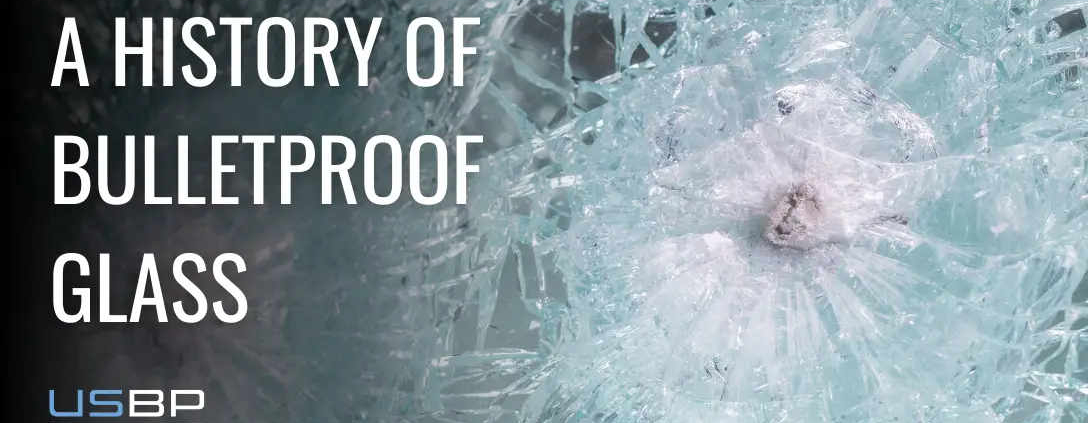The History Of Bulletproof Glass
Bullet-resistant glass often is one of the most important elements when it comes to securing high-risk properties such as banks, embassies and military installations. However, this hasn’t always been the case. Although its roots date back centuries, ballistic glass as it is known today is a relatively recent invention. From the earliest days as a novelty to its integral role in protecting people and property, bulletproof glass has come a long way. Taking a look at its history can help illustrate the science and artistry that goes into manufacturing it and further an appreciation of how it works.
When Was Bulletproof Glass Invented?
The earliest example of hardened glass was little more than a 17th century parlor trick at first. Prince Rupert’s Drops are small beads made by dripping molten glass into water. As soon as the hot glass hits the water, its surface hardens but the interior core remains hot for a while. The molten core cools much more slowly, causing it to be compressed against the exterior glass and making it much harder. Its discoverers demonstrated this hardness by attempting to smash the beads with a hammer, to no avail. Only by snapping off the drop’s elongated tail could the crystalline structure of the glass be disturbed enough to cause the entire drop to burst into a shower of fine particles.
The next stage in the development of ballistic glass didn’t arrive until the early 20th century when French chemist Edouard Benedictus accidentally discovered laminated glass. As the story goes, Benedictus dropped a glass beaker that contained plastic cellulose nitrate and found that the coating prevented it from shattering. He continued experimenting, using the technique of rapidly cooling molten glass from the Prince Rupert’s Drops technique to create panes of hardened glass. These were laminated with sheets of plastic cellulose to form the earliest type of protective glass. Originally, Benedictus’s hope was that this method would be used to manufacture automotive windshields and windows that would not shatter the way traditional glass does. However, it would be decades before the auto industry adopted the material.
Timeline of Protective Glass Use
The earliest use of tempered and laminated safety glass as a protective measure dates to World War I. The laminated glass developed by Benedictus was used to manufacture the lenses for gas masks. By the time World War II started, this glass was being implemented as windows and windscreens for bunkers and vehicles. This was only the beginning, and today military bulletproof glass is one of the largest segments of the industry as a whole.
Some of the most prominent moments in the history of ballistic glass include the installation of bullet-resistant windows in the White House in 1942. Franklin D. Roosevelt ordered this to add protection to the Oval Office in the wake of the Pearl Harbor attack. In 1956, bullet-resistant glass was used to protect the Mona Lisa at the Louvre in response to criminals attempting to damage the painting. By 1981, the famous “Popemobile” was outfitted with ballistic glass to protect Pope John Paul II after an attempt on his life. The following year, the first patent exclusively for bulletproof glass was issued in the United States.
How Bullet Resistant Glass Has Evolved
Prince Rupert’s Drops are purely glass, the only difference being the tempering process that gives them their durability. Benedictus’s original safety glass consisted of two tempered panes of glass sandwiching a sheet of cellulose. Over time, the process of manufacturing ballistic glass has continued to evolve. New materials and techniques have made bulletproof windows and doors even stronger and safer to withstand a broader range of threats including blasts, storm impacts and forced entry.
Today, many ballistic glass products are manufactured using an advanced version of Benedictus’s original technique. Panes of glass are sandwiched between thin layers of flexible urethane to create windows that absorb the impact of bullets instead of shattering. Each layer urethane deforms upon impact, absorbing a portion of the projectiles’ kinetic energy. This prevents the bullets from completely penetrating the pane. The lamination of urethane is critical also because it holds broken pieces of the tempered glass in place, preventing them from flying away and harming anyone on the other side of the window.
Modern ballistic glass production is a highly sophisticated process. Through a combination of intense heat and pressure, the layers that make up bullet-resistant windows are integrated in such a way that they are virtually indistinguishable from a single pane of traditional glass.
Bulletproof System in Today’s Building Design
Bulletproof windows and doors are becoming a quintessential part of the building design for facilities requiring security. Not only are they being designed to provide even better protection but everyday there are new complex glass layups developed to meet today’s architectural requirementsincluding daylighting, , insulated and low emissivity for energy efficiency, bird friendly glass and the ability to provide sound isolation for confidentiality purposes. Glass is no longer the weak part of the wall system and with the new developments, buildings can balance security with an open and inviting design without the institutional appearance that security buildings historically incorporated.
Into the Future
The bullet-resistant windows and doors manufactured today represent a huge leap forward from the earliest iterations of the technology. However, it’s likely that the industry will have to continue improving on its products. After all, weapons continue to become more lethal and destructive, meaning facilities that require protection need to respond in kind.
U.S. Bullet Proofing stands at the forefront of the industry, leveraging our in-house engineering expertise to devise solutions that keep people and property safe from external threats. If you are interested in learning more about how we play a part in pushing this technology forward, reach out and speak with one of our representatives today.


